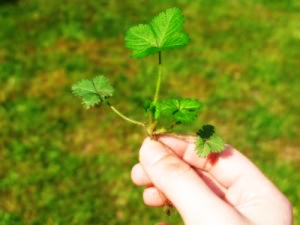 In order to maintain a beautiful-looking or productive garden, you must know that it also takes a lot of effort and patience. You have to put an extra effort in your garden and assess what your garden needs are. Unlike animals and human beings, plants manufacture their own food.
In order to maintain a beautiful-looking or productive garden, you must know that it also takes a lot of effort and patience. You have to put an extra effort in your garden and assess what your garden needs are. Unlike animals and human beings, plants manufacture their own food.
Plants undergo the process called photosynthesis in making their own food. They harness the sun’s rays, water and minerals from the soil for photosynthesis to occur. Plants needs to nourish themselves too with minerals and nutrients but sometimes these things are lacking or have already depleted from the soil that plants have an insufficiency of it.
If these nutrients and minerals are lacking from the soil, your garden plants will not look as healthy as they were supposed to be. This is the part where we put or apply fertilizers to make the soil “fertile” again with the minerals and nutrients that plants need. By doing this, you will be sure that your plants are taking sufficient nutrients for them to grow healthier and greener and more productive.
Fertilizers: Need to Know
It is not as simple as you think fertilizing is. You have to consider some things first before you apply a certain fertilizer, when is the right time in applying it, the process of fertilizer application and most of all, the type or kind of fertilizer to be used.
There are 16 primary elements that plants need in order to grow and be healthy and productive. These primary elements include nitrogen, phosphorus and potassium and are called macronutrients; the 13 other elements that plants need are called micronutrients. These elements are found in different percentages in different types of fertilizers available in the market today.
Basic Tips in Fertilizing
In applying fertilizers to your garden you should consider these tips to make it easier for you:
- Soil testing kit. To make sure that you are to go on the right track, it is best that you purchase a soil testing kit to test the soil in the soil bed after it has been tilled.
- Soil pH level. This is very important to know before you apply fertilizers. If your soil pH is acidic or has a pH of 5.8 or lower, add lime to your garden to balance it. If, on the other hand, your soil is basic or alkaline or has a pH level of 7.2 and higher, you should add aluminum sulfate to the soil.
- Fertilize when needed. Fertilize your garden depending on the level of nutrients present in the soil. Apply fertilizers to the base of the plants to get it directly to the roots.
- Go organic. You can use organic fertilizers if you want or prefer. Follow the directions for use in each pack or bag carefully to achieve desired effects and balance nutrients in the soil.
